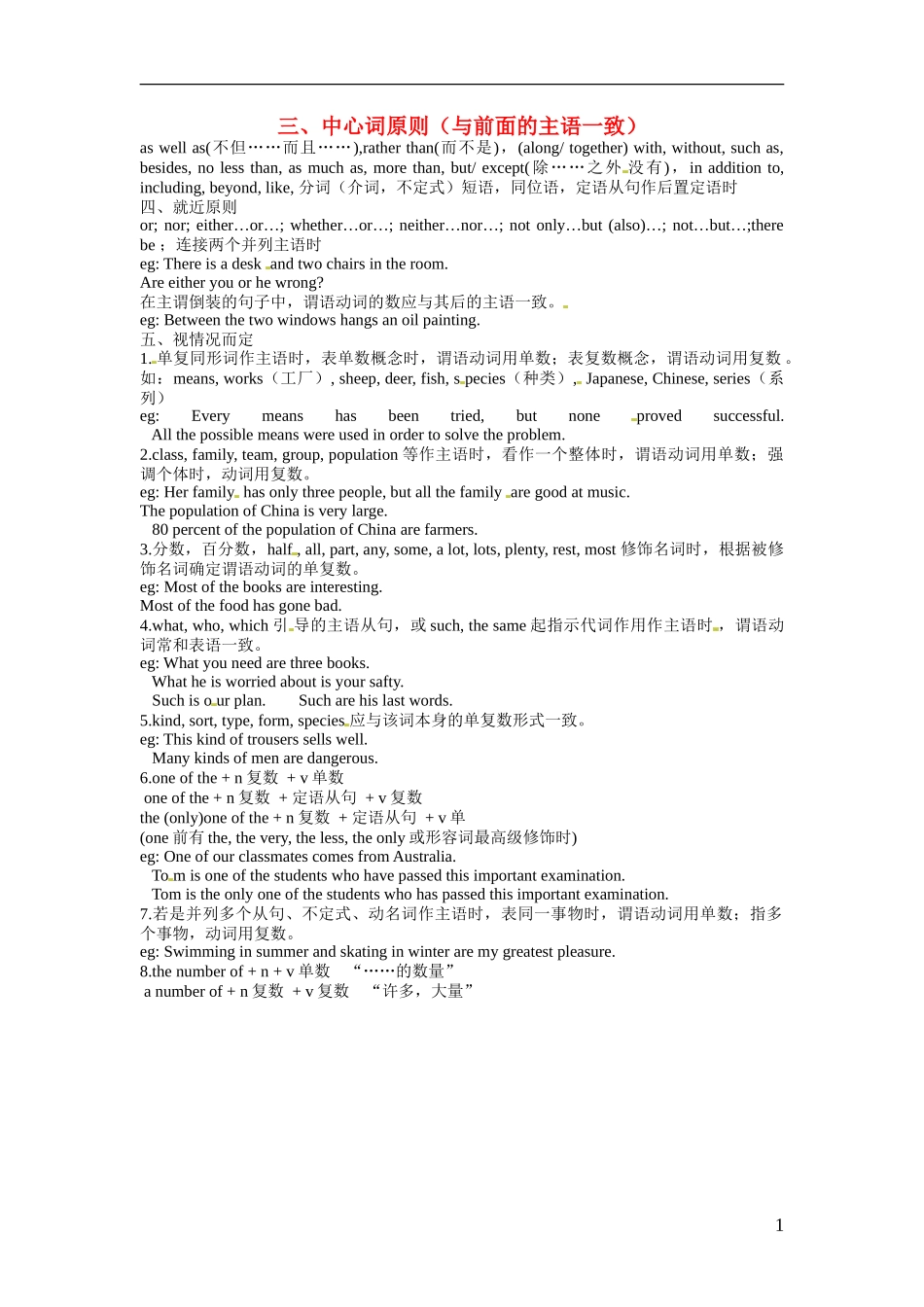三、中心词原则(与前面的主语一致)as well as(不但……而且……),rather than(而不是),(along/ together) with, without, such as, besides, no less than, as much as, more than, but/ except( 除……之外 没有),in addition to, including, beyond, like, 分词(介词,不定式)短语,同位语,定语从句作后置定语时四、就近原则or; nor; either…or…; whether…or…; neither…nor…; not only…but (also)…; not…but…;there be ;连接两个并列主语时eg: There is a desk and two chairs in the room.Are either you or he wrong?在主谓倒装的句子中,谓语动词的数应与其后的主语一致。eg: Between the two windows hangs an oil painting.五、视情况而定1. 单复同形词作主语时,表单数概念时,谓语动词用单数;表复数概念,谓语动词用复数 。如:means, works(工厂), sheep, deer, fish, s pecies(种类), Japanese, Chinese, series(系列)eg: Every means has been tried, but none proved successful. All the possible means were used in order to solve the problem.2.class, family, team, group, population 等作主语时,看作一个整体时,谓语动词用单数;强调个体时,动词用复数。eg: Her family has only three people, but all the family are good at music.The population of China is very large. 80 percent of the population of China are farmers.3.分数,百分数,half , all, part, any, some, a lot, lots, plenty, rest, most 修饰名词时,根据被修饰名词确定谓语动词的单复数。eg: Most of the books are interesting.Most of the food has gone bad.4.what, who, which 引 导的主语从句,或 such, the same 起指示代词作用作主语时 ,谓语动词常和表语一致。eg: What you need are three books. What he is worried about is your safty. Such is o ur plan. Such are his last words.5.kind, sort, type, form, species 应与该词本身的单复数形式一致。eg: This kind of trousers sells well. Many kinds of men are dangerous.6.one of the + n 复数 + v 单数 one of the + n 复数 + 定语从句 + v 复数the (only)one of the + n 复数 + 定语从句 + v 单(one 前有 the, the very, the less, the only 或形容词最高级修饰时)eg: One of our classmates comes from Australia. To m is one of the students who have passed this important examination. Tom is the only one of the students who has passed this important examination.7.若是并列多个从句、不定式、动名词作主语时,表同一事物时,谓语动词用单数;指多个事物,动词用复数。eg: Swimming in summer and skating in winter are my greatest pleasure.8.the number of + n + v 单数 “……的数量” a number of + n 复数 + v 复数 “许多,大量”1
